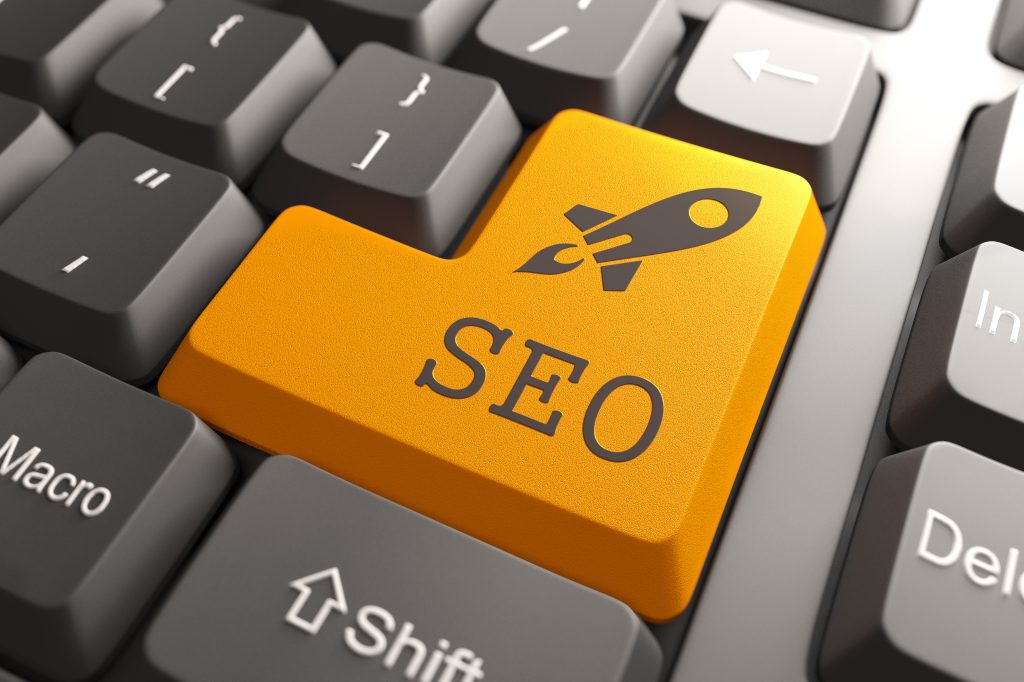Whether you’re a small business owner, or your company’s worth 7 figures, SEO plays a big part in the success of your business. Take a look at our top SEO tips to help you achieve your goals.
With everyone trying to rank on the first page of Google, there is a lot of competition out there. However, that doesn’t mean it’s impossible.

What exactly is SEO?
SEO, or ‘search engine optimisation’, is the process of improving your website to increase visibility to your audience. Depending on how successful your SEO is, will depend on how high you rank on search engines like Google, Bing and Yahoo.
For example, if you’re a company that sells furniture, you’ll want to be on the first page on Google when someone types in keywords relating to furniture. This will essentially drive more traffic to your site and generate sales.
But in order to rank on a search engine’s first page, it’s vital to have a good SEO strategy in place.
6 Best SEO Tips You Need to Know
So, let’s take a look at these 6 top SEO tips that can help you rank higher on those highly sought after search engines.
1. Optimise your title and meta description
More often than not, your title and meta description is the first thing your audience sees before clicking onto your website. Depending on how enticing this is to your audience, will depend on whether or not they’re going to click through to your site.
Now, the goal is to obviously attract your audience to your site so the better the title, the more clicks you’re going to get.
Your title should be around 60 characters and your meta description around 160. That’s very few characters when it comes to creating an impact but it’s absolutely doable.
Another top tip for optimising both of these features is to ensure you include your target keyword and communicate clearly what your page is about.
Google shows the keywords in bold in the meta description to make it easier for audiences to read (see an example below).
If you need some guidance on how to create a compelling headline, check out CoSchedule Headline Analyzer. This rates your title and gives you an SEO score out of 100. It’s handy and free to use!

2. Use Relevant Keywords
Following on from using efficient titles and meta descriptions, it’s important to know what keywords to use within these. This is the key to attracting the right audience and ranking high on search engines.
‘But how do I know which keywords to use?’ you might ask. First, you’ll need to come up with your primary keyword. This should be the main focus of your content and should represent your brand and services well.
Then, you’ll want to establish your secondary keywords. These are to support the main topic of your page. People often have a few different secondary keywords to represent the different subtopics of their page.
If you need help with thinking of keywords, use Google’s Keyword Planner. This allows you to research and discover new keywords. The keyword researcher tool is a great way to see how often certain keywords are searched and how those searches have changed over time.
3. Ensure Content is Original and High Quality
Google loves original content. When you’re putting content out there for your target audience, make sure not to fall into the habit of giving them what everyone else is already giving them. Make it authentic and unique in order to stand out from the crowd.
While you ensure your content is original, it also has to be correct. If Google thinks that your content isn’t original or doesn’t offer any value, then you’re not going to do so well on the page ranking.
Top Tip: Even if the information is already out there for your audience, put an insightful twist on this to create authenticity. Or give them a story they’ve never heard before.
Not only does originality do wonders for your SEO, so does high quality content. Would you trust a website that had grainy images and typos everywhere? The answer is no.
Without even realising it, your audience will be judging you based on the quality of your site. If they don’t like the look and feel of it, they won’t spend their time browsing through it.
High quality content creates trust between you and your audience, and the more your audience trusts you, the more likely they’ll use your services.

Low quality image vs high quality image
4. Use Featured Snippets
Featured snippets are loved by people who want a quick answer to something, which is generally most of the time.
They’re the snippets of information that appear at the top of a search results page and are often displayed in a list or in a small block paragraph.
Having a featured snippet can be a shortcut to getting that no.1 spot on Google. However, these are highly sought after BUT they’re also so worth it. Luckily enough, some featured snippets are a little easier to get your hands on.
Check out Google Search Central to find out how exactly you can incorporate featured snippets into your SEO strategy.
5. Optimise Your Graphics
Every website and blog post needs graphics to accompany the pages. Audiences love any kind of visual aid to make their experience more pleasant and entertaining.
So when you include graphics on your page, take this opportunity to optimise them rather than sticking any image in and hoping it works.

Here’s what you can do:
Be relevant
Your image should compliment the copy. It’s no good using a completely random image that holds no relevance to the text.
This provides readers with an initial visual aid and prompt to what you are discussing. It also provides them with more information on your product or service.
Name your images
Make sure to give your image a good, relevant title. This is a really simple tip that should be done before you upload your image to your page.
When you download an image into your files, avoid keeping the title it automatically gives you and change this to a descriptive title that suits your image well.
This lets your search engine know exactly what the image is.
Resize and format your image
Scaling down the size of your image while maintaining a high resolution will work better for your website. Although you might be tempted to use a beautiful, large image, this can slow down the speed of your website (an instant turn off for all users).
Picking the correct file format is also key. PNG, JPEG and GIFs all work well. For simple images PNG works well and for images with lots of colour JPEG should be your go-to.
Use Alt Text
This is the copy that accompanies the image to give wider context and should be maximum 125 characters long. Search engines need this feature in order to index your image.
It means that if for some reason the image doesn’t load, the text will still be visible on the page. You can also use this as an opportunity to include some keywords to boost your visibility.
Top Tip: Be conscious not to use keyword stuffing. This can affect your search engine ranking and go against all your efforts to rank high.
6. Keep URLs Short and Descriptive
URLs appear below your title and above your meta description on a search engine. So it’s important to get these just right if you want to achieve successful SEO.
If your URL is long and clunky, it’s going to look off-putting and can sometimes scare people away! By cleaning up your URL, it helps search engines understand your page and gives your audience a better experience from the get-go.
To keep your URLs effective; include your primary keyword where possible, ensure it’s user-friendly and readable for your audience and keep it at around 60 characters.
The bottom line is, if you want your website to be successful, you need an SEO strategy. For websites old, new, big or small, it’s so important to incorporate these tips in order to rank high on those top search engines.
If you need help with implementing this yourself, get in touch with us today.



